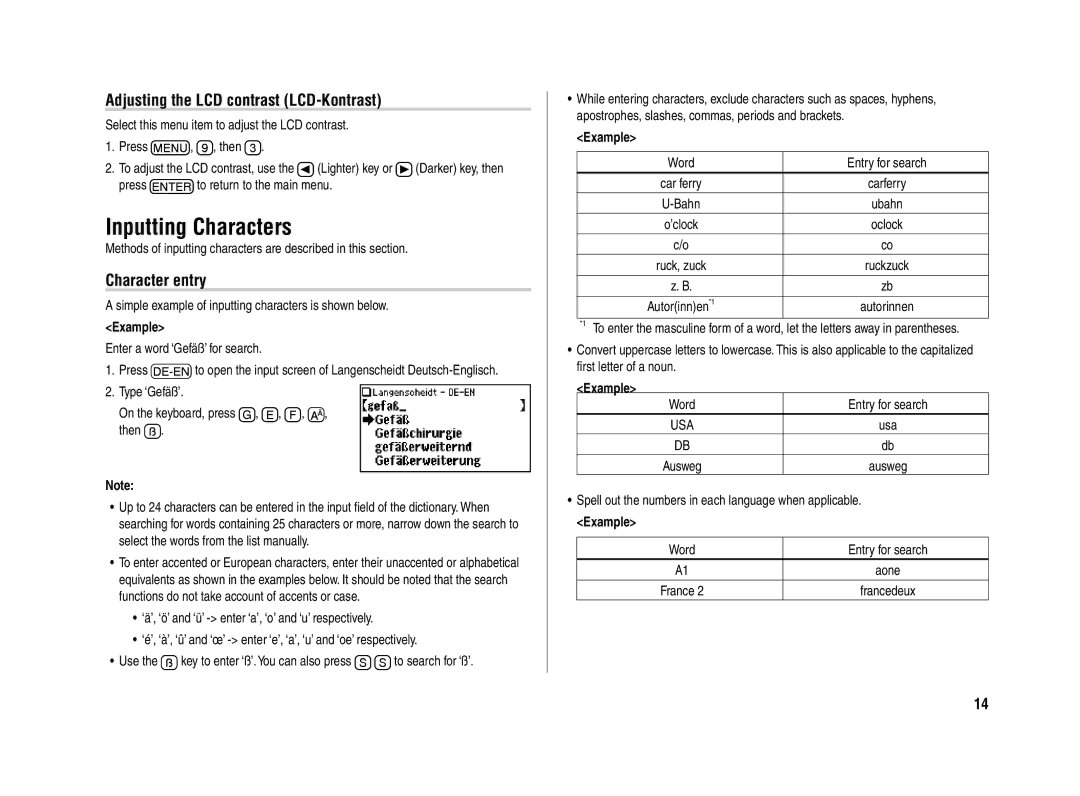
Adjusting the LCD contrast (LCD-Kontrast)
Select this menu item to adjust the LCD contrast.
1.Press M, 9, then 3.
2.To adjust the LCD contrast, use the [(Lighter) key or ](Darker) key, then press Eto return to the main menu.
Inputting Characters
Methods of inputting characters are described in this section.
Character entry
A simple example of inputting characters is shown below.
<Example>
Enter a word ‘Gefäß’ for search.
1.Press Uto open the input screen of Langenscheidt
2.Type ‘Gefäß’.
On the keyboard, press G, E, F, A, then ;.
Note:
•Up to 24 characters can be entered in the input field of the dictionary. When searching for words containing 25 characters or more, narrow down the search to select the words from the list manually.
•To enter accented or European characters, enter their unaccented or alphabetical equivalents as shown in the examples below. It should be noted that the search functions do not take account of accents or case.
•‘ä’, ‘ö’ and ‘ü’
•‘é’, ‘à’, ‘û’ and ‘œ’
•Use the ;key to enter ‘ß’.You can also press SSto search for ‘ß’.
•While entering characters, exclude characters such as spaces, hyphens, apostrophes, slashes, commas, periods and brackets.
<Example>
Word | Entry for search |
car ferry | carferry |
ubahn | |
o’clock | oclock |
c/o | co |
ruck, zuck | ruckzuck |
|
|
z. B. | zb |
|
|
Autor(inn)en*1 | autorinnen |
*1 To enter the masculine form of a word, let the letters away in parentheses.
•Convert uppercase letters to lowercase. This is also applicable to the capitalized first letter of a noun.
<Example>
Word | Entry for search |
USA | usa |
DB | db |
Ausweg | ausweg |
•Spell out the numbers in each language when applicable.
<Example>
Word | Entry for search |
A1 | aone |
|
|
France 2 | francedeux |
14
